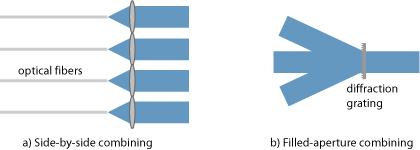No not quite more like 4 SF AW210s collminated through a 405-G-1 lens.
in order to build a lightsaber , a young jedi must embark on a perilous journey to the far reaches of space. alone on this quest, the final test to determine one's eligibility as jedi, the often deadly encounters occur in vast multitudes.
while dealing with these impromptu hazards, the task at hand is to find samples of the rarest crystal variety's in the universe. jedi to-be don't return until they
successfully achieve this mineral procurement. when the pieces are properly
assembled into a handle , then and only then will they channel +/- force into
the iconic weapon of the jedi order, or sith order, whichever you prefer....
with that said , and the aforementioned build concept in mind ...
i want you to take a magnifying lens outside on a nice sunny day. and i want you to focus the sunlight onto something so that you can see the contrast well. if you preformed this task properly , in front of you should be a tiny round dot that is hard to look at that should of started burning wherever it was. what you have just done is you focused a SINGLE source of photons with a single lens.(since the sun is so far out you can only catch the photons from within a direct line of sight to the sun, which is basically a radial laser , but to the lens it's no different then a 'linear' laser. as long as you dont consider the refraction , rarefaction , diffusion and reflection incongruensy's
that most of us take for granted every day.)
for the next task , i want you to go somewhere well lit from above with multiple light sources (i.e. cafeteria, living room , stadium, etc...) now repeat the same process with your lens . you will find that you have focused each light source equally , but they are NOT combined. (you just focused a MULTIPLE source of photons) now why is this ? because of the different positions of multiple sources , or angular offset vectors , through a single lens, keep there individuality's (the distance between the sources and their respective distances to the lens, inversely translate the same angular offset vectors to what ever ratio the lens is focusing at) resulting in a transversly jumbled array that they were in the first place. even tho they all went through the same point on the lens
now , remember the story of the jedi acquiring their lightsaber's ?well there are a few ways of combining lasers, here's one...

As a simplified example of side-by-side combining, four beams with top-hat intensity profiles of rectangular cross-section and flat phase profiles may be arranged to obtain a single beam with just two times the dimensions, or four times the area, and of course four times the power. (In practice, there may small gaps of low intensity between the beams, but this gap can in principle be fairly small.) If the beams are all monochromatic and mutually coherent, and the relative phases are properly adjusted to obtain essentially plane wavefront's over the whole cross-section, the resulting beam has a beam divergence which is only half that of the single beams. As a result, the beam quality is preserved, and the brightness can be four times that of the single beams. In practice, top-hat beam profiles may not be easily obtained (especially not of rectangular shape), and the gaps between the individual beams (i.e. the limited fill factor) will somewhat reduce the beam quality and brightness.
picture and last paragraph taken from:
rp-photonics.xxx Encyclopedia of Laser Physics and Technology section 'c'





